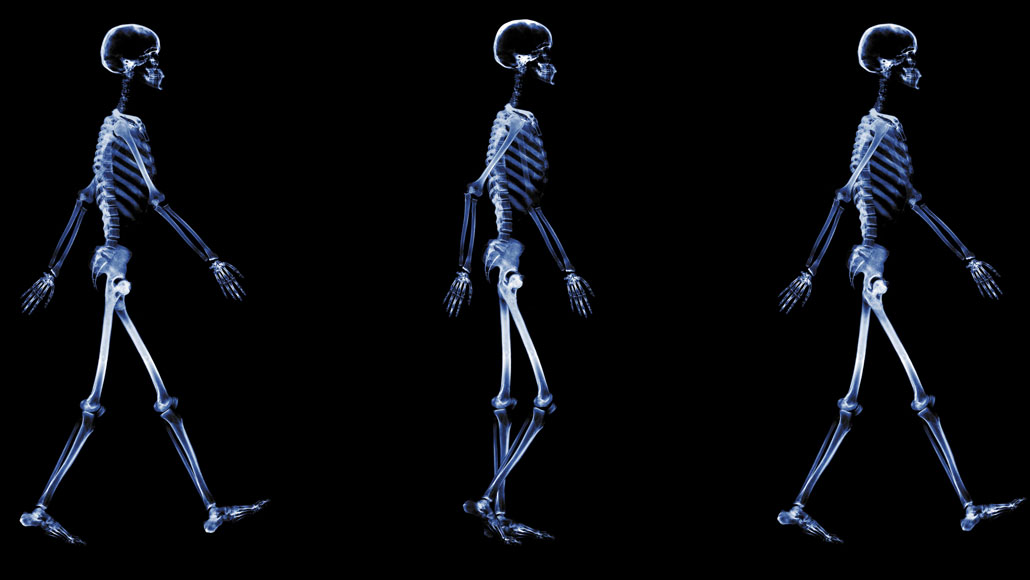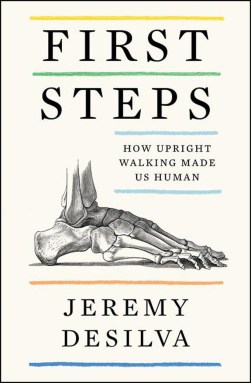‘First Steps’ shows how bipedalism led humans down a strange evolutionary path
A new book argues that upright walking had profound effects on human anatomy and behavior

The way humans walk today was one evolutionary pathway among many possibilities, Jeremy DeSilva explains in First Steps.
Digital Vision./Getty Images
First Steps
Jeremy DeSilva
Harper, $27.99
No other animal moves the way we do. That’s awfully strange. Even among other two-legged species, none amble about with a straight back and a gait that, technically, is just a form of controlled falling. Our bipedalism doesn’t just set us apart, paleoanthropologist Jeremy DeSilva posits; it’s what makes us human.
There’s no shortage of books that propose this or that feature — tool use or self-awareness, for example — as the very definition of humankind. But much of our supposed uniqueness doesn’t stand up to this tradition. In First Steps, DeSilva takes a slightly different approach. Our way of walking, he argues, set off an array of consequences that inform our peculiar evolutionary history.
DeSilva starts his tour through the annals of bipedalism with other upright organisms. Tyrannosaurus and ancient crocodile relatives are trotted out to show how they moved on two legs, thanks to long, counterbalancing tails (SN: 6/12/20). DeSilva stumbles a little here, like arguing that “bipedalism was not a successful locomotion for many dinosaur lineages.” An entire group — the theropods — walked on two legs and still do in their avian guises. But the comparison with dinosaurs is still worthwhile. With no tail, the way we walk is even stranger. “Let’s face it,” DeSilva writes, “humans are weird.”
Each following chapter gets more surefooted as DeSilva guides readers through what we’ve come to know about how our ancestors came to be bipedal. This is breezy popular science at its best, interweaving anecdotes from the field and lab with scientific findings and the occasional pop culture reference. DeSilva gets extra credit for naming oft-overlooked experts who made key discoveries.
Sign up for our newsletter
We summarize the week's scientific breakthroughs every Thursday.
Instead of presenting a march of progress toward ever-greater bipedal perfection, DeSilva highlights how our ancestors had varied forms of upright walking, such as the somewhat knock-kneed gait of Australopithecus sediba (SN: 7/25/13). The way we now walk, he argues, was one evolutionary pathway among many possibilities.
But walking upright opened up unique evolutionary avenues, DeSilva notes. Freed from locomotion, our arms and hands could become defter at creating and manipulating tools. Our ancestors also evolved a bowl-shaped pelvis to comfortably cradle our viscera. But this arrangement made giving birth more complicated, especially as human infants began to have larger heads that needed to pass through a narrowed birth canal created by this anatomical shift. Such trade-offs, including how debilitating twisted ankles and broken bones can be to humans, may have required our ancestors to care for each other, DeSilva concludes. While that may be a step too far into speculation, he nevertheless makes a compelling case overall. “Our bipedal locomotion was a gateway to many of the unique traits that make us human,” he writes, an evolutionary happenstance that formed the context for how we came to be.
Buy First Steps from Bookshop.org. Science News is a Bookshop.org affiliate and will earn a commission on purchases made from links in this article.







